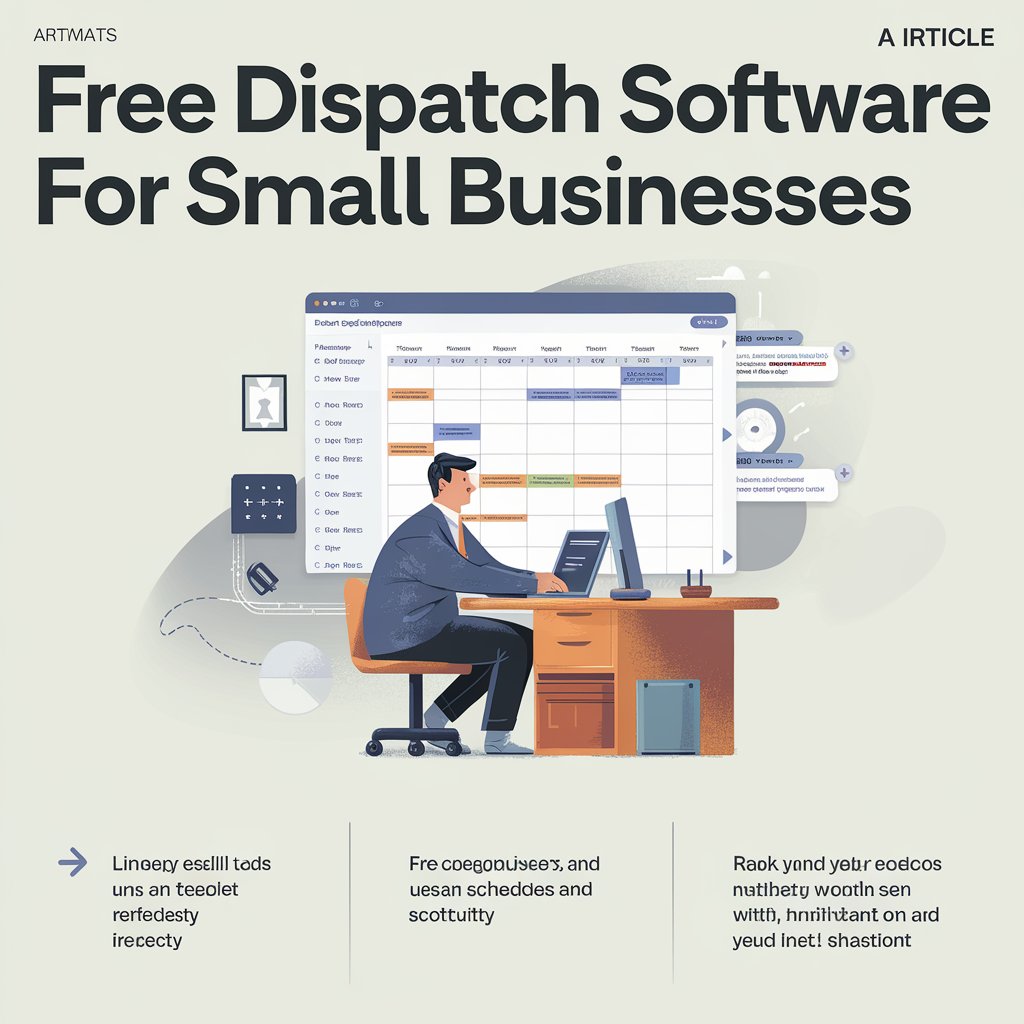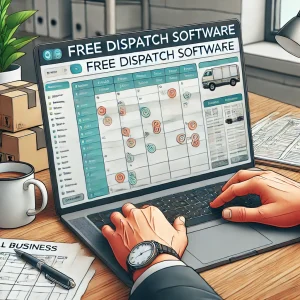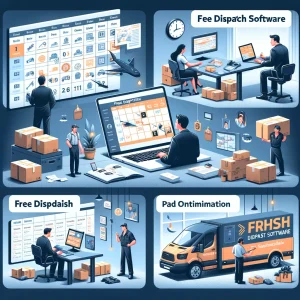Free Dispatch Software: A Practical Guide for Small Businesses

What is Free Dispatch Software?
Free dispatch software typically offers basic tools for scheduling, assigning tasks, and sometimes simple route planning. These can range from general-purpose task management apps adapted for dispatching to specialized free versions of paid dispatch platforms.
Common Features of Free Dispatch Apps
- Basic scheduling calendar
- Task assignment
- Simple status updates
- Limited user accounts (usually 1-3)
- Basic reporting
The Reality of Free Dispatch Software
While “free” sounds great, it’s important to understand what you’re really getting:
- Limited Functionality: Free versions often lack critical features like route optimization, real-time tracking, or detailed analytics.
- User Restrictions: Most free plans limit the number of users, which can be problematic as your team grows.
- Data Caps: Expect limitations on the number of tasks, customers, or historical data you can store.
- Lack of Integration: Free versions rarely integrate well with other business software you might be using.
- Basic Support: Don’t expect priority customer support or extensive training resources.
- Ads and Upsells: Many free tools display ads or constantly push upgrades to paid versions.
Who Can Realistically Use Free Dispatch Software?
Free dispatch programs can be suitable for:
- Solo operators: Independent contractors or one-person businesses managing their own schedule.
- Very small teams: Businesses with 2-3 field workers and simple scheduling needs.
- Startups: New businesses looking to test basic dispatching processes before investing in a paid solution.
- Occasional use: Businesses that only need dispatching features sporadically.

Real-World Applications
Case Study 1: Local Handyman Service
John, a solo handyman, uses a free dispatch app to manage his daily job schedule. The basic calendar and task assignment features are sufficient for his 5-6 jobs per day. However, he often resorts to phone calls for real-time updates and uses a separate invoicing tool.
Case Study 2: Small Cleaning Service
A family-run cleaning service with 3 employees tried using a free dispatching software for small business. While it helped with basic scheduling, they quickly hit user limits and lacked features for efficient route planning between job sites.
Limitations and Challenges
- Scalability: As your business grows, you’ll likely outgrow the free software quickly.
- Reliability: Free services may have more downtime or performance issues.
- Data Security: Lower-grade security measures might put customer information at risk.
- Inefficiency: Lack of advanced features can lead to manual work and inefficiencies.
- Professional Image: Using cobbled-together free tools might affect your professional appearance to clients.
Alternatives to Consider
- Paid Dispatch Software: Often more cost-effective in the long run due to increased efficiency.
- Freemium Models: Start with a free version but be prepared to upgrade as needed.
- Free Trials: Many paid services offer free trials, allowing you to test full features before committing.
Making Free Dispatch Software Work
If you do opt for a free solution, here are tips to maximize its use:
- Combine Tools: Use multiple free tools to cover different needs (e.g., one for scheduling, another for communication).
- Create Processes: Develop clear workflows to compensate for software limitations.
- Regular Evaluation: Continuously assess if the free tool is helping or hindering your operations.
- Be Prepared to Upgrade: Have a plan (and budget) in place for when you need to switch to a paid solution.

The True Cost of "Free"
When considering free dispatch software, factor in these hidden costs:
- Time: Manual work and inefficiencies can cost you valuable time.
- Missed Opportunities: Limited features might mean missed chances for optimization and growth.
- Training: You may need to retrain staff when you eventually switch to a more robust system.
- Customer Satisfaction: Limited capabilities could affect service quality and customer experience.
When to Make the Switch
Consider upgrading to a paid solution when:
- Your team expands beyond 3-5 members.
- You’re spending excessive time on manual dispatching tasks.
- Customer complaints increase due to scheduling or communication issues.
- You need more detailed reporting and analytics for business decisions.
- The lack of integration with other tools is causing significant inefficiencies.

The Role of Linbis in Small Business Dispatching
While free dispatch software can be a starting point, many small businesses find they need more robust solutions as they grow. This is where platforms like Linbis come into play. Linbis offers a comprehensive dispatching solution that addresses many of the limitations found in free software:
- Scalability: Linbis grows with your business, eliminating the need for frequent software changes.
- Full Feature Set: From advanced routing to detailed analytics, Linbis provides tools that free versions typically lack.
- Integration: Seamlessly connects with other business tools, creating a more efficient workflow.
- Customization: Adapts to your specific business needs, unlike one-size-fits-all free options.
- Professional Support: Offers dedicated customer support and training resources.
While Linbis is not free, its value proposition lies in increased efficiency, time savings, and the ability to support your business growth. For many small businesses, the transition from free to paid solutions like Linbis becomes necessary to maintain competitiveness and improve service quality.
Conclusion
Free dispatch software can be a good starting point for very small operations or businesses just testing the waters of digital dispatching. However, it’s crucial to approach these tools with realistic expectations. Understand their limitations, be prepared for the challenges, and have a plan for when your business outgrows these basic solutions.
Remember, in business, “free” often comes with hidden costs. As your operation grows, investing in a robust, paid solution like Linbis can lead to significant long-term benefits in efficiency, customer satisfaction, and overall business growth. Carefully evaluate your needs, consider your growth trajectory, and choose a dispatching solution that will support your business not just today, but well into the future.
